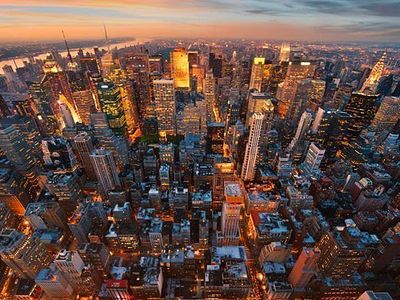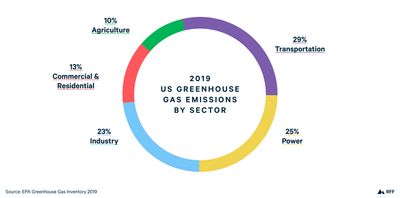Balancing urbanization and climate change
How urbanization contribute to climate change
Since the start of the Industrial Revolution, the average global temperature has gradually risen. This is because the Industrial Revolution led to a critical increase in the process of urbanization. Urbanization refers to the process by rural areas develop to form cities. As cities began to grow, population increases rapidly. As a result, cities use a large proportion of energy supply such as fossil fuels, which makes them responsible for approximately 70 percent of the global greenhouse gas emissions. Taiwan’s CO2 emissions per capita has nearly doubled since the 1990s. In the recent decade, climate change has become even worse. Human activities such as transportation and electricity generation have aggravated the situation by increasing greenhouse gas emissions.

The importance of urbanization
Here are some examples of the advantages of urbanization:
- Better public transport
- Better overall infrastructure
- More education opportunities
- Higher employment rates
- Better technology
Urbanization is a common phenomenon in every country. It is often related to a better standard of living — more job opportunities, better pay, better healthcare, a centralized market, etc, which have drawn people into living in the cities. In many developing countries, urbanization helps people escape poverty through increased productivity, employment opportunities, improved standard of life and investment in infrastructure and services. Their urban population is increasing at a much higher rate than more-developed or developed countries. The growth of urbanization has contributed to the world economy and the advancement in technology.
Even though urbanization is undoubtedly one of the major contributors to global warming, human society benefits a lot from it as well. In fact, urban areas are the social, economic, and political centers.
How to reduce the impact of urbanization on the environment?
But with the advancement of technology and the development of urbanization, environmental concerns emerges. Greenhouse gas emissions are at the highest levels ever, which mostly comes from burning fossil fuels to support the electricity used for buildings, facilities, and transportation. The major greenhouse gases include carbon dioxide, methane, nitrous oxide, and fluorinated gases, where carbon dioxide is the most prevalent of all. These greenhouse gas emissions lead to an increase in the average global temperature. Therefore, the key to minimize the damage on the environment caused by urbanization is to minimize greenhouse gas emissions.
Cities can be built and designed in a way to mitigate climate change

You might think that cities are worsening climate change. However, there are ways for cities to reduce climate change. According to a UN article, “Huge gains, in terms of reducing harmful gases, can be made by changing how we plan, build, manage, and. power our cities and towns.” Well designed cities can significantly reduce carbon footprint.
One way to reduce the amount of carbon dioxide produced by our homes and offices is to move to zero carbon buildings. Zero carbon buildings are those that are highly energy sufficient and are powered by renewable energy sources, with any remaining carbon balance offset. To power our cities, we must shift away from fossil fuels and move towards clean, resource-efficient energy. In fact, Taiwan has set the goal of having 20 percent of its energy come from renewable sources and 50 percent from low-carbon natural gas by 2025. The government is actively building more wind farms and solar power plants to expand the use of renewable energy.
Not only should renewable energy sources be used to power buildings, zero carbon transport should be implemented into cities. According to the United States Environmental Protection Agency, “transportation is the largest source of greenhouse gas emissions in the United States, followed by electricity generation.” As such, using electric public transport, powered through renewable energy, could significantly reduce greenhouse gas emissions.
A transition to sustainable and renewable energy raises its own conflicts and concerns, but it’s an approach worth considering carefully and taking action.
Businesses can reduce greenhouse gas emissions through the climate policy
Urbanization advances a country’s business sectors. While the country may thrive economically from new businesses, there are also more greenhouse gas emissions. Therefore, it is important to regulate the amount of greenhouse gas emissions that these companies produce. This can be done in three ways: carbon pricing, technology subsidies, and performance standards.
Carbon pricing policy requires companies to pay a price for each ton of carbon emissions they release. Therefore, business owners or decision makers would seek different ways to reduce the amount of carbon they release in order to pay less tax. For example, companies would buy more advanced machines that have a higher energy efficiency.
Technology subsidies provide businesses a financial incentive in exchange for a particular economic activity. Tax credits have been an efficient method to encourage companies and households to produce or use technologies and products that have lower emissions. According to Taiwan News, “Since 2018, the city government has subsidized the replacement of lighting, air conditioning, and refrigerators. This is in addition to adopting a range of energy-management systems for the service industry, healthcare, communities, apartments, hotels, and schools.” This helps reduce the amount of greenhouse gas emissions.
The third major policy to reduce greenhouse gas emissions is performance standards, which are a broad set of policies that set benchmarks that firms must meet. For instance, governments can set a boundary or benchmark for power generation, the amount of low-carbon energy sources, fuel economy, and more, in each sector of a business.
Conclusion
Despite the convenience and benefits that urbanization has brought, it is important to acknowledge the negative impacts it has caused and further find a solution to mitigate it. The earth is threatened by climate change, and it might not be too late to start taking action now. Taiwan has started to actively participate in the climate change agenda in recent years by developing its renewable energy and more. Of course, every solution has its own downside. Yet, through careful evaluation, there are practical ways to reduce greenhouse gas emissions and further decelerate the rate of global warming.